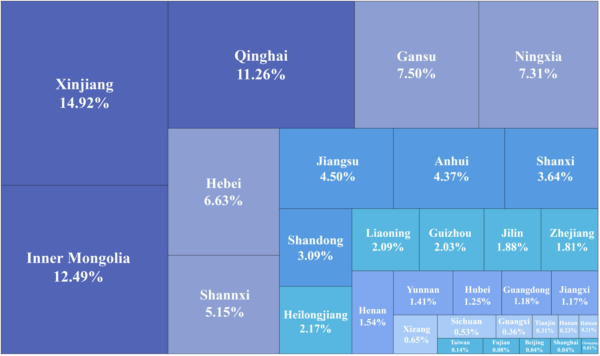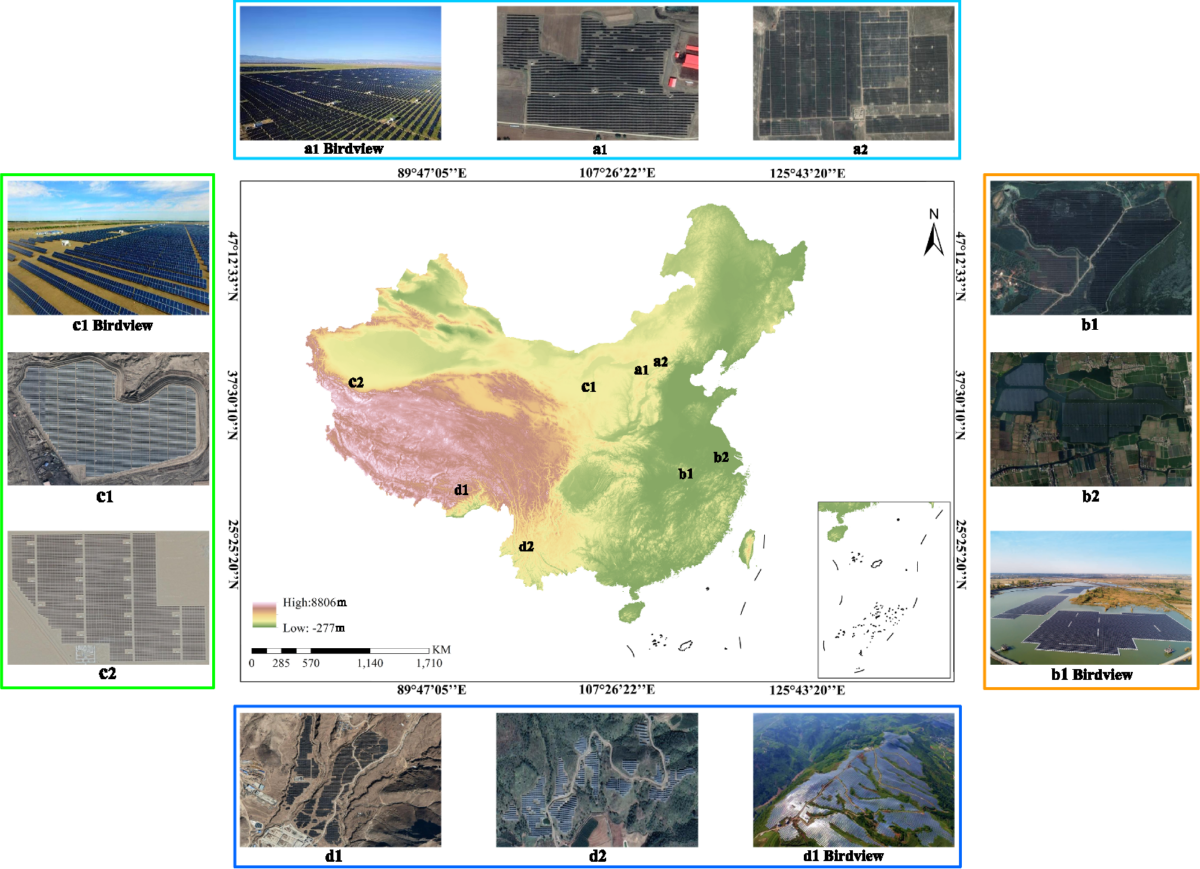Scientists led by the China Agricultural University have created a national-scale map and dataset of ground-mounted PV power stations in China. The data is based on Sentinel-2 imagery from 2020 and has a spatial resolution of 10 meters. According to the researchers, the publicly available data set can assist capacity estimation and prediction tasks, site selection, test energy policies, and more.
“There is a lack of a national map of China’s PV power stations with a higher spatial resolution (i.e., 10 meters) that could provide a global understanding of PV’s spatial deployment patterns,” they explained. “Considering that the large-scale grounded-mounted PV power stations almost cover more than 90% of the total PV capacity in China, we attempt to provide the first publicly available 10-m national map of ground-mounted PV power stations in this dataset.”
To create the dataset, the research group used multi-spectral remote sensing data from the European Space Agency’s Sentinel-2 satellites, together with digital elevation model (DEM) information from Google Earth Engine (GEE). Those were processed via the GEE cloud computing platform.

Image:
China Agricultural University, Scientific Data, CC BY 4.0 DEED
The processing was based on a random forest (RF) classifier, a machine-learning method consisting of many decision trees. It was trained on visual inspection of 320,000 PV and 320,00 non-PV samples. As PV stations and the surroundings look different across the vast land of China, RF was used on a province level. In some cases, where even the provinces were too big, they were further divided into sub-sections.
“During the mapping process, it would be difficult to produce an accurate map with automatic classification once and only once. In this situation, we resorted to active learning,” they said. “The core idea of active learning is described as follows. Firstly, train a classifier with initial labeled data, then use the trained classifier to predict the entire dataset. Afterwards, the wrongly predicted unlabelled data would be sent to experts. Then, the classifier would be re-trained with both the initial and the newly labeled data. The above process would be run in an iterative way until a satisfactory classification result would be achieved.”
The group validated the national-scale testing dataset by selecting a total of 5,000 positive samples and 5,000 negative samples and asked the model to identify them. The model has reached an accuracy of 88.36% for samples containing PV and 89.94% for non-PV samples.
“According to our dataset, China has a total of 2,467.7 km2 ground-mounted PV power stations in 2020. The top three largest provinces refer to Xinjiang, Inner Mongolia, and Qinghai, whose PV area ratios are 14.92%, 12.49%, and 11.26%, respectively, with a total of nearly 40% of all the PV power stations in China,” the academics explained. “Among the rest provinces, both Gansu, Ningxia, Hebei and Shaanxi witness a PV area ratio above 5%, which contributes to another 20% of China’s PV power stations in total.”
Most of the stations lie in the northern part of China, especially in northwest and northeast China. “Interestingly, a large number of PV power stations lie along the Great Wall (including the northern parts of Hebei, Shanxi, Shaanxi, Ningxia and Gansu Province) and the Silk Road (mainly refers to Gansu and Xinjiang Province),” they said. “In eastern China, PV power stations mainly locate in Anhui, Jiangsu, Shandong, Henan, Hubei and Jiangxi Province, while in southwestern China, Guizhou, Yunnan and Sichuan witnessed the most PV power stations.”
Concluding the article, the academic group said it will release in the future new maps that are based on data from different years. The current dataset was presented in “A 10-m national-scale map of ground-mounted photovoltaic power stations in China of 2020,” published in Scientific Data. It was created by scientists from China Agricultural University, the Chinese Academy of Sciences, and the United Kingdom’s University of Cambridge.
This content is protected by copyright and may not be reused. If you want to cooperate with us and would like to reuse some of our content, please contact: editors@pv-magazine.com.



By submitting this form you agree to pv magazine using your data for the purposes of publishing your comment.
Your personal data will only be disclosed or otherwise transmitted to third parties for the purposes of spam filtering or if this is necessary for technical maintenance of the website. Any other transfer to third parties will not take place unless this is justified on the basis of applicable data protection regulations or if pv magazine is legally obliged to do so.
You may revoke this consent at any time with effect for the future, in which case your personal data will be deleted immediately. Otherwise, your data will be deleted if pv magazine has processed your request or the purpose of data storage is fulfilled.
Further information on data privacy can be found in our Data Protection Policy.